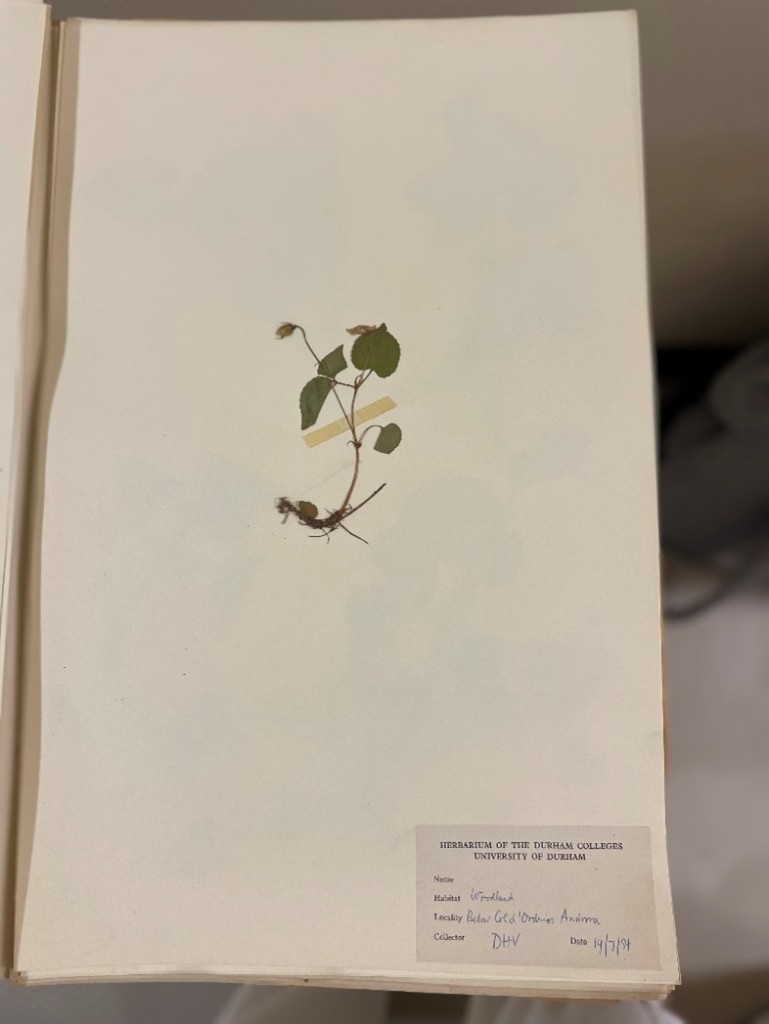Written by Anna Robson, Graduate Intern Archaeology and Bioscience Collections, Durham University.
Background to the Collection
At Durham University, an herbarium of international scope has recently been reawakened revealing unique plant specimens and important stories about the Bioscience Collection as a whole. Over the past 18 months, the Archaeology and Bioscience Curator and Intern have undergone a process of conserving, managing, and researching the ex-teaching Bioscience Collection. Once part of the Bioscience Department’s teaching materials, this collection comprises of skeletal material, antler trophy heads, taxidermy, entomology, oology, a spirit collection and an herbarium.
To give a brief history to the collection, Durham University used to teach Zoology (established 1946) and Botany (established 1932), with Botany in the founding four departments of science in the University. The Department of Botany was spearheaded by Benjamin Millard Griffiths (1886-1942), one of the first readers in Botany who is described as a ‘true scientist’ and ‘inspired great affection’. As scientific advances changed from macro to micro to molecular, Durham’s Biosciences current department is an amalgamation of the former Botany and Zoology departments. Due to this shift, hands-on teaching using herbaria and animal osteological specimens gradually halted.
Our herbarium holds a variety of vascular plants, seeds, bryophytes, algae, fossils, and bulky specimens. Research is still ongoing with the collection, with current knowledge and understanding of people and places being built up through the initial location mapping project and the conservation report project.
People and Projects
Welsh Grass Breeding Programme
The Welsh Grass Breeding Station (now known as the Institute of Biological, Environmental and Rural Sciences) was established in 1919 by Sir George Stapleton, an agricultural researcher, and Botany Adviser at the University College of Wales. The station pioneered hybridisation of grass species to improve the agriculture of the country after World War One which helped to create the foundations of our modern ryegrass (Lolium perenne). T. J. Jenkins was appointed in 1919 to lead the project due to his research on grass breeding and genetics.
In Durham’s herbarium are some of these early specimens from T. J. Jenkins during the project in 1919-1920. Recent archival research has revealed to us that the Botany department received the specimens from University College of Wales as a gift in 1954-55 (fig.1). It included mounted specimens of interspecific and intergeneric hybrids from the grasses Lolium and Festuca, and full research notes and published papers prepared by Jenkins. It was noted in this report that Durham is the only University to have received any specimens from the Station at that time.
Margaret Bradshaw
Dr Margaret E Bradshaw is a well-loved figure in the world of Botany. Having published her first book, ‘Teesdale Special Flora Trust: Places, plants and people’ in 2023 at the age of 97, she is a long-term scientist of and advocate for the unique flora of the Upper Teesdale area in County Durham. Our herbarium holds a series of Rosaceae specimens, including Lady’s-mantles (Alchemilla mollis), which was the focus of her PhD research in the late 1950s (fig.2).
We also know that we have some specimens specifically from the site of the Cow Green Reservoir, where Margaret and other well-known departmental figure David Bellamy, were highly active in their protesting its creation (fig.3). Petitions circulated to halt the constructed, signed by Bradshaw and Bellamy and other prominent Botanists of the time, but to no success as the site was detonated on 12th October 1967.
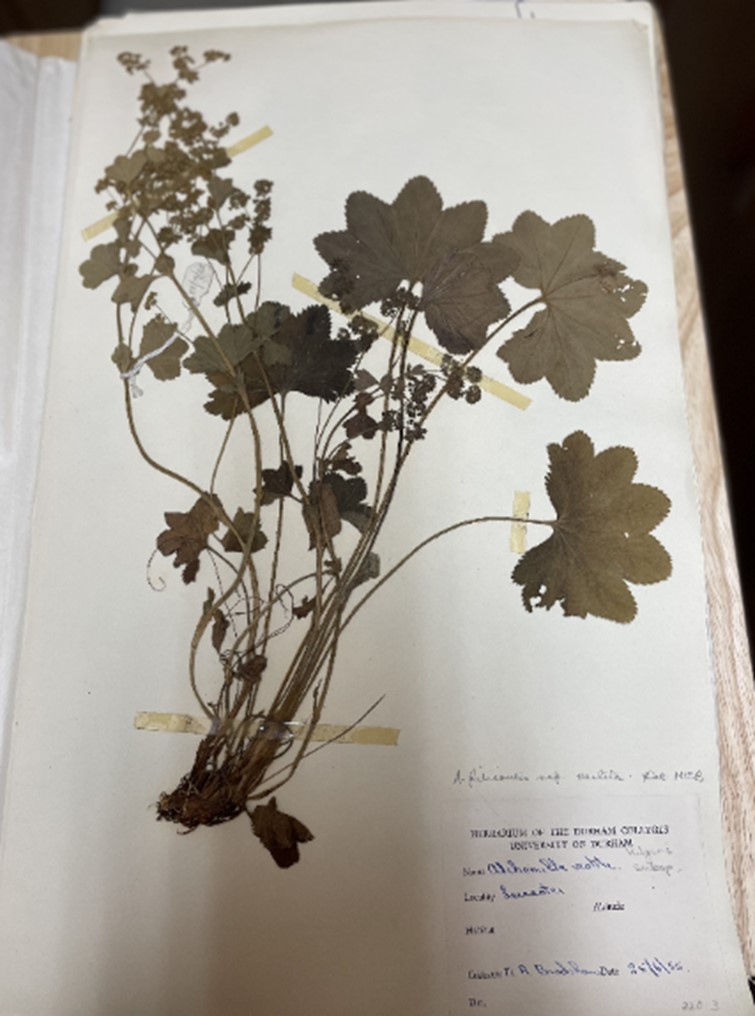
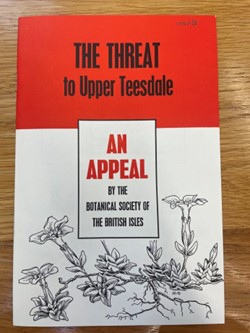
D. H. Valentine
In 1945, David Henriques Valentine was appointed Head of the Department of Botany at the University of Durham. Alongside Bradshaw he was also a key player in the movement against the creation of the Cow Green dam in the late 1960s. Valentine’s research interests became well established in experimental taxonomy, especially of violets and the British primulas, and was part of the European contingency of advancements in biosystematics. The herbarium contains many specimens collected by D.H. Valentine from across continents including South America and Europe (fig.4).
D.M. Moore
Moore was born in 1933 in Barnard Castle and had an early interest in the natural world when exploring his native Teesdale, an area which he loved his entire life. Recent archival research on the old Botany department has revealed that Moore was a key student of Botany in the mid-1950s, with his research supported by Durham County Council he was awarded the Botany Field Prize in 1954.
In the early 1960s, Moore went on many expeditions to the Falkland Islands, where upon he made a new discovery of plant unique to the islands, named Plantago moorei (“Moore’s plantain”), after himself. He was also a part of the Exploration Society’s expedition to Madeira (fig.5).
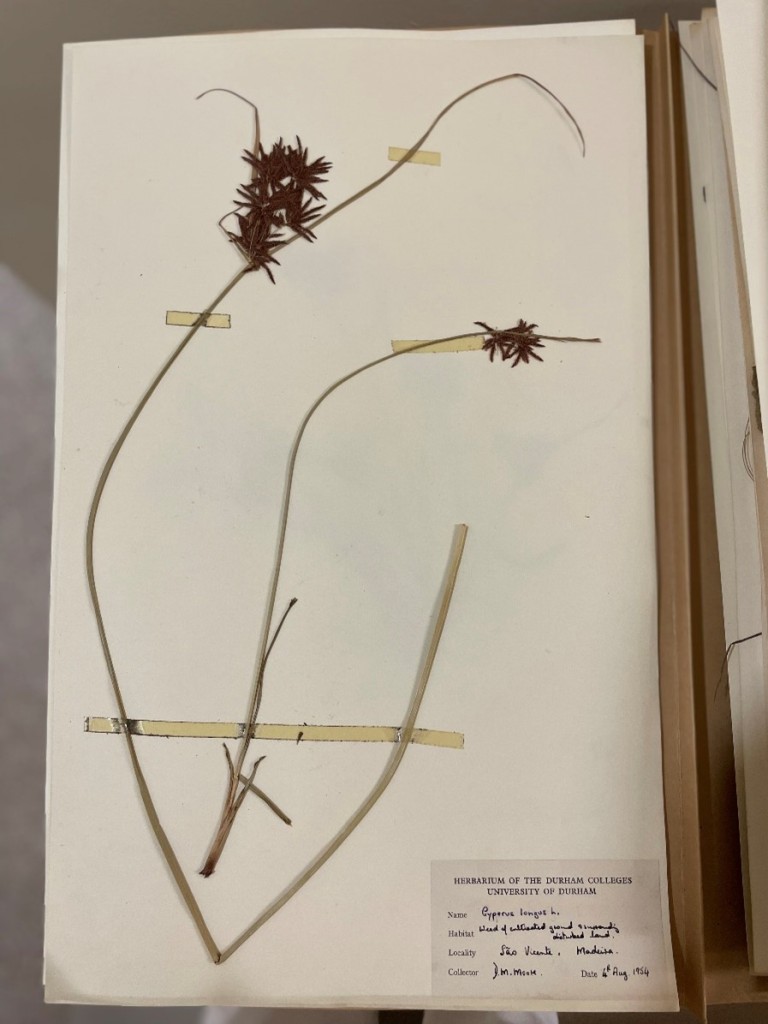
Locations
The herbarium represents all the elements of a larger herbarium but on a much smaller scale. Where this really shines through is how spread and varied our specimens come from, despite only holding 4-5,000 (fig.6).

Gonçalo Álvares (Gough Island) is an almost-uninhabited volcanic island in the South Atlantic Ocean, except for the up to six personnel at the South African National Antarctic Programme weather station; making it one of the most remote places with a constant human presence in the world. In our collection are two samples of Tetroncium magellanicum, the only known species of the genus Tetroncium from the Juncaginaceae family (fig.7). It is an example of the rare dioecious plant type, where there is only one sex.
Svalbard is an island close to the North Pole which experiences some extreme seasons. Svalbard has both permafrost and tundra terrain, with only 10% of the areas which defrost during the summer months growing vegetation, making its flora unique. Our specimens from Svalbard include Dryas octopetala, an Arctic-Alpine species, and Cardamine pratensis from the ex-mining now purely research town of King’s Bay (fig.8).
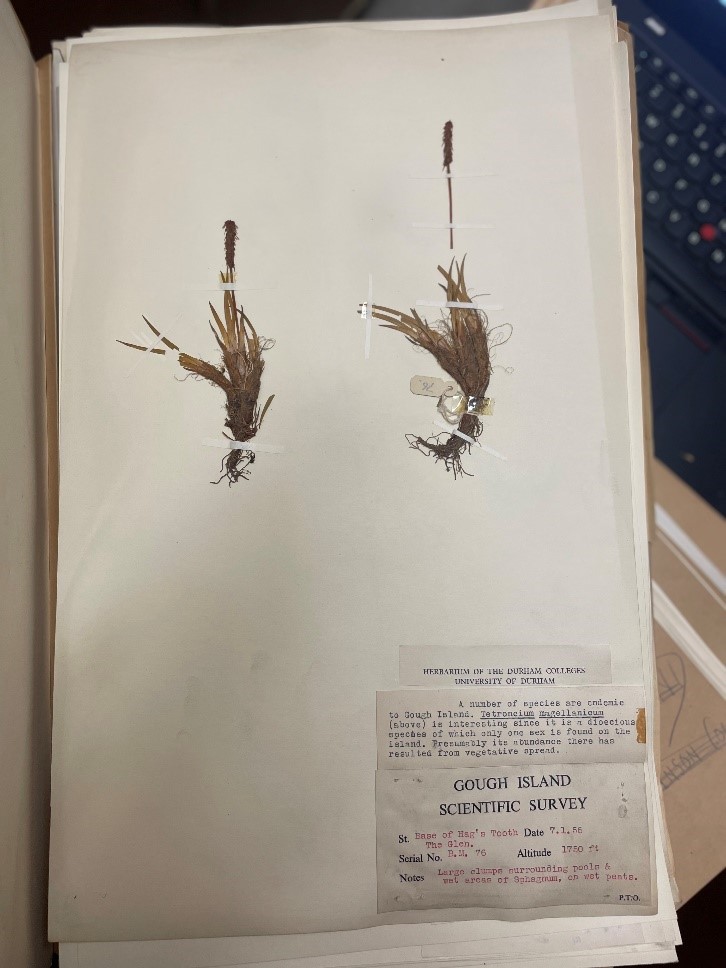
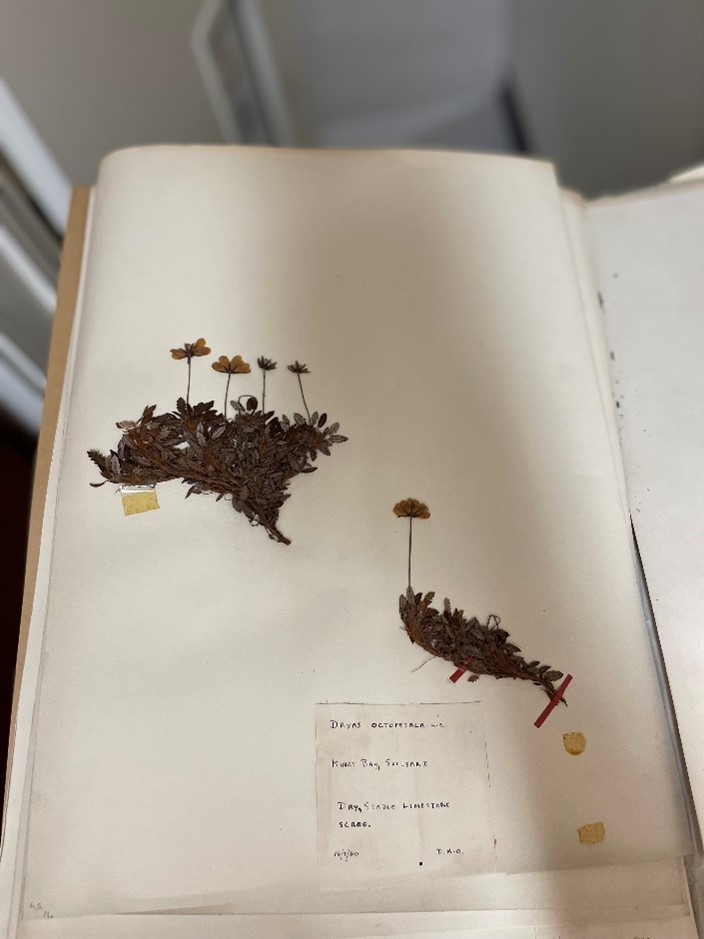
The Collections Management Project
The intern for Archaeology and Bioscience (that’s me!) has taken on the task of reawakening the herbarium within the wider Bioscience Collection project. The most significant improvement has been the mapping of specimens in each shelf on a family taxonomic level and noting along the way key specimens, collectors, or locations.
Our first university student placement has aided in object research of the fossil collection, which had previously been stored in plastic bags and crumbling cardboard boxes. Her specialised knowledge has been invaluable in beginning to understand this part of the collection, building data and further spotlighting the interesting and unique collection we have. For example, revealing that some specimens were collected by Miss. K. M. Chalklin (fig.9), one of the first female lecturers in the Botany, serving 30 years in the department upon her retirement in 1963.
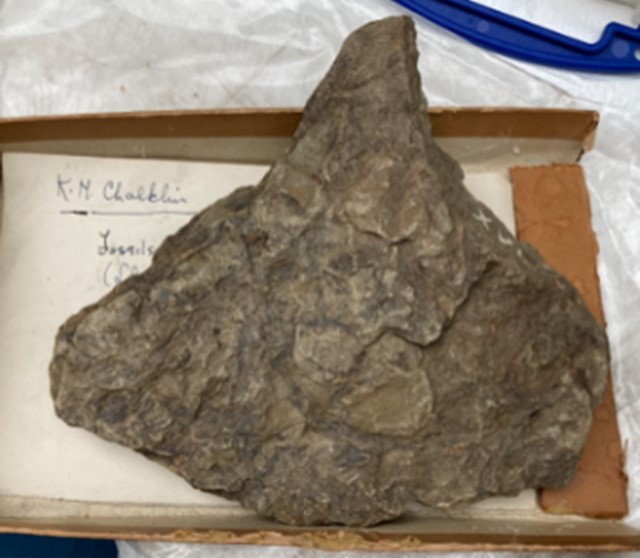
What’s Next?
We have conducted benchmarking visits to Leeds City Museum stores and Royal Botanic Gardens in Edinburgh to further our understanding of botanical collections and we thank the curators, Olwen Grace and Clare Brown, for their time and advice.
Our next stage is to now begin our cataloguing and digitisation processes. The collection in its current form is uncategorised, with specimens of families and species not together. Therefore, there will also be a great deal of research and identification happening at the same time.
We are extremely excited for this journey, please also check out our website Bioscience Collections – Durham University. And keep your eyes peeled for an announcement very soon…
References
University of Durham (1964) Report by the Vice-Chancellor and Warden for the year 1962-3: University of Durham.
Baker, R.A. (1974), ‘The Origins and Early Development of Botany in the Durham Division of the University’, Vasculum, 76 No 3: 18-20.
Baker, R.A. (1991), ‘The Durham connection in the history of arachnology in Britain (1850-1950)’, Archives of Natural History, 18 (2): 221-230.
University of Oxford (2024), Available at: Home Page – BRAHMS Online (kew.org), Accessed on 17th June 2024.
Svalbard Flora (2020), Available at: Home (svalbardflora.no), Accessed on 17th June 2024.
Prowse, W.A., Baxter, E.F., Burchnall, J.L., Gibby, C.W., Hollingworth B. and Hopkins W. (eds.) (1975) University Science in Durham 1924-74: University of Durham.
Edina (2024), Available at: Digimap (edina.ac.uk), Accessed on 17th June 2024.
Durham University Library Archives and Special Collections (2008) Additional MS. 1596: Cow Green Reservoir inquiries papers. Durham: University of Durham.


